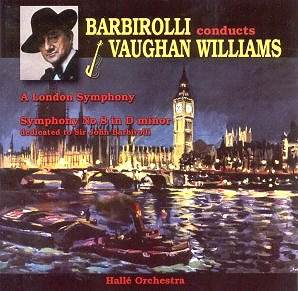 Composer: Joseph Szigeti
Composer: Joseph Szigeti
Works: Szigeti ANDaNTE 2991-2994
Performers: Joseph Szigeti (violin), various orchestras and pianists
Recording: Various historic recordings, 1926-1946
Label: ANDaNTE
Joseph Szigeti stands as a towering figure in the pantheon of violinists, not merely as a virtuoso but as a consummate artist who championed the breadth of the violin repertoire, from Baroque to contemporary works. The four-disc set, Szigeti ANDaNTE 2991-2994, is a timely reminder of his significant contributions and offers a comprehensive survey of his artistry during the years 1926 to 1946. This collection captures Szigeti at the height of his powers, navigating a rich array of composers and styles with an interpretive depth that is as engaging as it is enlightening.
The first disc opens with an arrangement of Bach’s Keyboard Concerto in D Minor, BWV 1052, a transcription that, while cleverly executed, reveals the limitations of its orchestration. Szigeti’s performance is marked by a thoughtful lyricism, particularly in the Adagio, where his vibrato and tonal shading evoke a compelling emotional landscape. While the cadenzas may leave some yearning for the harmonic richness of the original piano writing, Szigeti’s lyrical phrasing and remarkable control compensate for these gaps, establishing a strong foundation for the interpretative journey that follows. The inclusion of Tartini’s D Minor Concerto, arranged by Szigeti himself, showcases his ability to extract sweet tones and lyrical beauty from the instrument, a testament to his refined taste and stylistic integrity.
The arrangement of Peter Warlock’s Capriol Suite offers a glimpse into Szigeti’s penchant for eclecticism, presenting movements that are both charming and sophisticated, supported ably by pianist Nikita Magaloff. Szigeti’s ability to infuse these selections with his Hungarian folk heritage is palpable, particularly in the lively Basse Danse and the Pavane. The disc continues with a delightful selection of Slavonic Dances by Dvořák, where Szigeti’s partnership with Andor Földes reveals a comfortable camaraderie, lending these pieces a nostalgic charm that dances on the edge of sentimentality without descending into excess.
Transitioning to the second disc, Szigeti’s interpretations of Beethoven’s Violin Concerto in D Major, Op. 61, and Mendelssohn’s Violin Concerto in E Minor, Op. 64, present a striking contrast. Bruno Walter’s conducting is at times uneven, yet Szigeti’s playing imbues the Beethoven with a rich, lyrical quality, especially in the Larghetto, where the violin sings with a serene beauty that resonates deeply. The modified Joachim cadenza is a highlight, revealing Szigeti’s willingness to balance technical prowess with expressive depth. The Mendelssohn, under Sir Thomas Beecham, while occasionally lacking in ensemble cohesion, captures the spontaneity of performance, with Szigeti’s sweet-toned sound shining through the orchestral textures.
As we progress to the third disc, Prokofiev’s First Violin Concerto is a significant highlight, reflecting Szigeti’s close relationship with the composer. His interpretation is marked by a dream-like quality, particularly in the Andantino, where his nuanced phrasing and sensitivity to the work’s ironic elements resonate profoundly. The live recording of Bloch’s Violin Concerto is another standout, where Szigeti’s fervent playing brings forth a distinct Jewish character that permeates the music, further enhanced by Mengelberg’s conducting.
The final disc returns to the Baroque with Handel’s Sonata in D Major, Op. 1, No. 13, whose lively Allegro finds Szigeti in fine form. His commitment to stylistic authenticity is evident, even as he navigates the challenges of historic performance practice. The Brahms Sonata No. 3, Op. 108, showcases a rich variety of moods, with Egon Petri’s piano accompaniment providing a strong foundation for Szigeti’s expressive playing. Notably, Stravinsky’s Duo Concertant, with the composer himself at the piano, offers a rare glimpse into the collaborative spirit that characterized much of Szigeti’s career.
The engineering quality across this set is commendable, with the 24-bit digital remastering process ensuring clarity and warmth, effectively minimizing the hiss that often mars historical recordings. The attention to detail in sound quality allows Szigeti’s nuanced interpretations to shine, bringing forth the subtleties of his playing that might otherwise go unnoticed.
This collection is not merely a showcase of Szigeti’s formidable technical skills; it is a profound exploration of musical expression that transcends the passage of time. The diverse repertoire, ranging from beloved classics to underplayed gems, underscores Szigeti’s role as a bridge between the past and the present. The ANDaNTE release stands as a significant contribution to the discography of one of the 20th century’s finest violinists, illuminating his artistry for both longtime admirers and new listeners alike.



